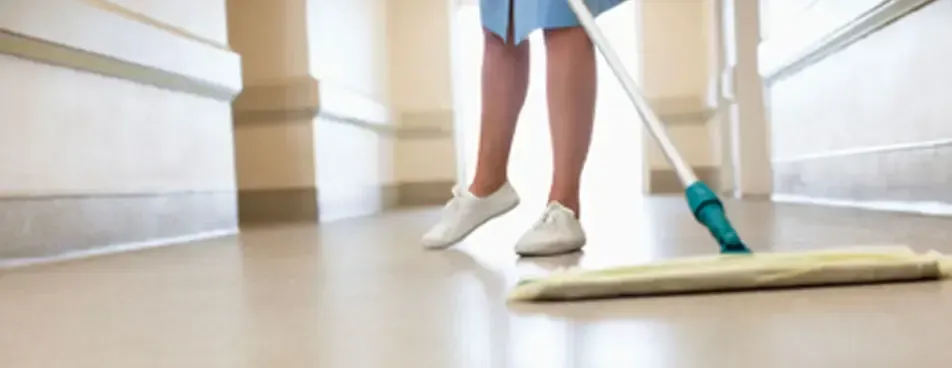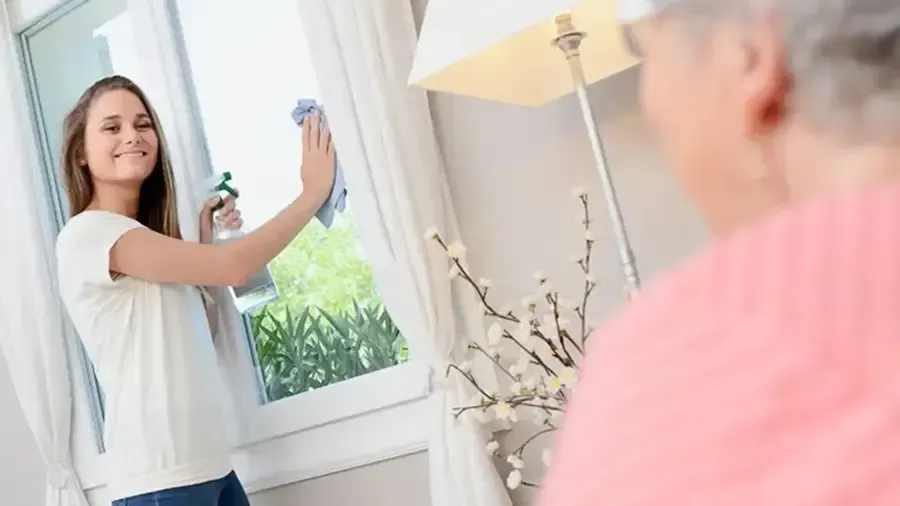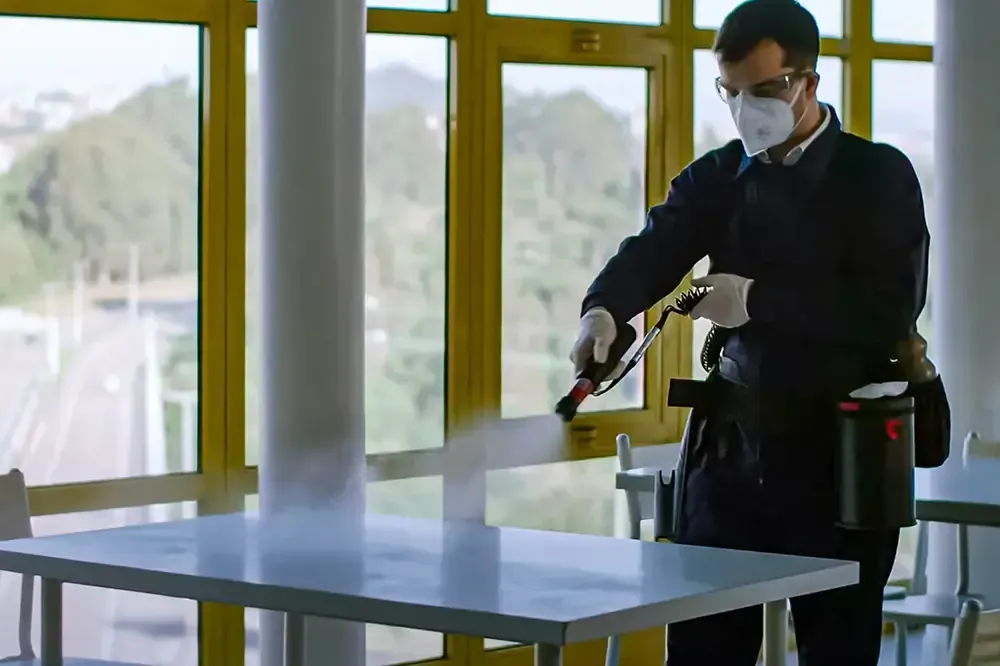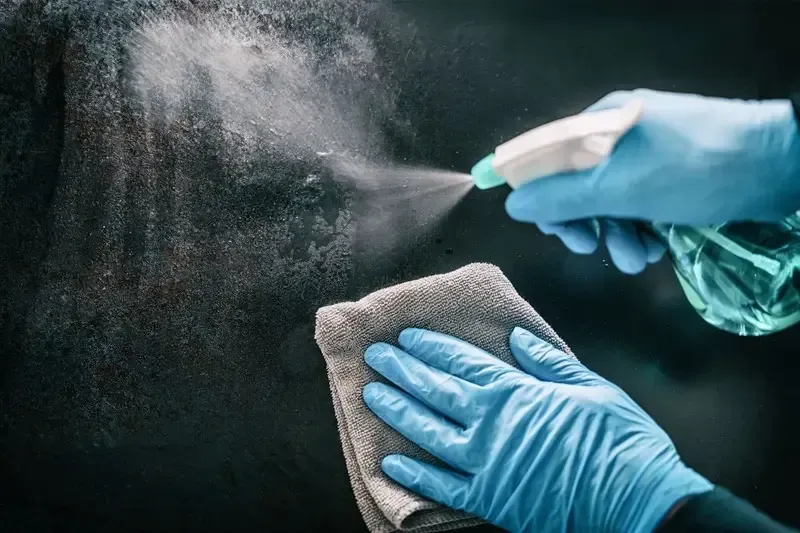Helping to Enhance Cleanliness and Safety in Our Schools
Our Game-Changing Antimicrobial Solution for Our Kids

In the dynamic and bustling environment of schools, where young minds learn and grow, maintaining a hygienic atmosphere is paramount. The health and well-being of students and staff are deeply intertwined with the cleanliness of their surroundings. Schools, being vibrant hubs of activity, are often challenged by the rapid spread of germs and bacteria, making effective sanitation crucial. A clean and hygienic school not only supports the physical health of its occupants but also fosters a nurturing environment conducive to learning and development. In recognising this essential need, our antimicrobial surface protection solutions offer an innovative approach to significantly reduce the transmission of infectious agents, ensuring a safer, healthier, and more focused educational experience for all.
Catering to the unique needs of educational environments, our advanced antimicrobial surface protection product makes maintaining a hygienic school setting achievable and efficient. By creating an invisible barrier on surfaces that actively combats the spread of germs and bacteria, our solution ensures long-lasting cleanliness with minimal maintenance. It’s designed to seamlessly integrate into the school’s routine, drastically reducing the frequency of deep cleaning and the use of harsh chemicals, while continuously safeguarding the health of students and staff. With our product, schools can achieve a higher standard of hygiene effortlessly, allowing them to focus more on education and less on infection control.
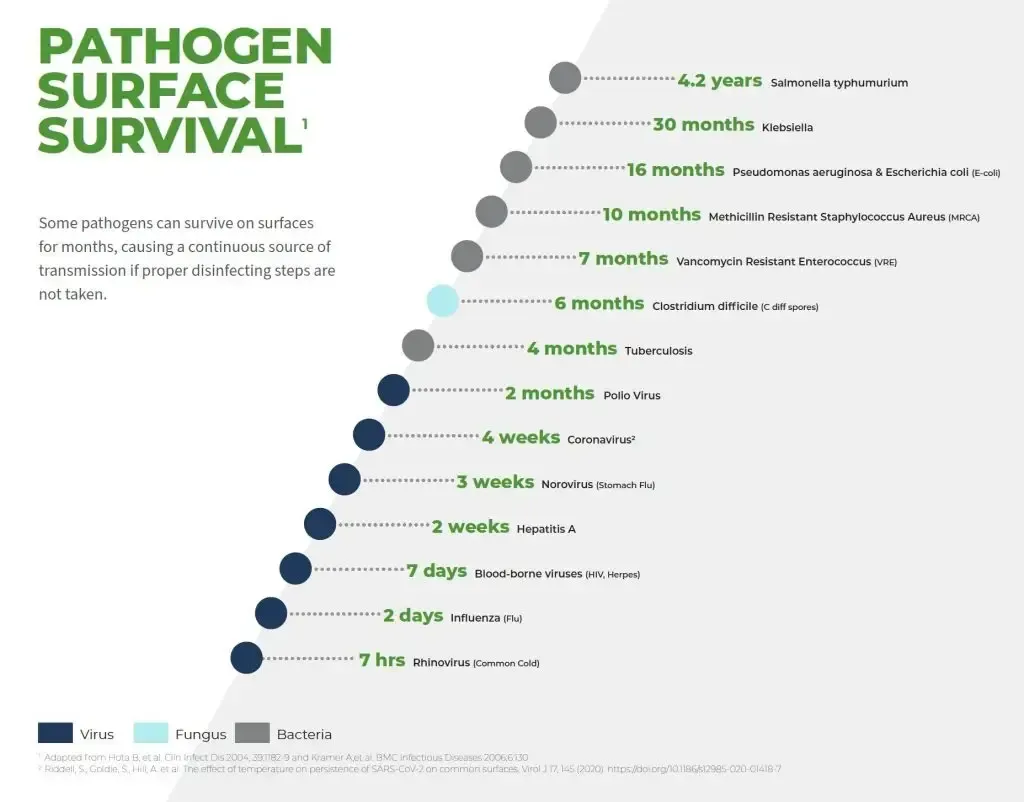
We're Championing Infection Control in Australian Schools which should be a Priority for Our Nation's Health and Education
In the vibrant corridors and interactive classrooms of Australian schools, there lies an unseen challenge – the constant presence of bacteria and germs. Given the communal nature of schools, these environments are particularly susceptible to the spread of infections. A revealing study highlighted in the Australian Journal of Education noted the persistence of microbes on school surfaces, underscoring the need for robust sanitation measures.
Tackling the Unseen Foe
The complexities of managing germ transmission in schools are multifaceted. Australian schools, bustling with activity, are environments where students are in close proximity, sharing everything from textbooks to digital devices. This scenario is further complicated by the fact that children, especially in their early years, are still developing their immune systems, making them more susceptible to catching and spreading illnesses.
The National Health and Medical Research Council of Australia stresses the importance of hand hygiene in schools, linking poor handwashing habits directly to increased infection rates. Despite handwashing being a straightforward preventive measure, it’s often overlooked or inconsistently practiced by students.
Moreover, the diverse range of contact surfaces in schools, such as playground equipment, desks, and lunch tables, act as reservoirs for germs, contributing to the challenge.


Forward-Thinking Solutions for Healthier Schools
The complexities of managing germ transmission in schools are multifaceted. Australian schools, bustling with activity, are environments where students are in close proximity, sharing everything from textbooks to digital devices. This scenario is further complicated by the fact that children, especially in their early years, are still developing their immune systems, making them more susceptible to catching and spreading illnesses.
The National Health and Medical Research Council of Australia stresses the importance of hand hygiene in schools, linking poor handwashing habits directly to increased infection rates. Despite handwashing being a straightforward preventive measure, it’s often overlooked or inconsistently practiced by students.
Moreover, the diverse range of contact surfaces in schools, such as playground equipment, desks, and lunch tables, act as reservoirs for germs, contributing to the challenge.
A Collaborative Journey
Creating a germ-free educational environment is a collaborative effort that involves educators, students, parents, and health experts. With the integration of innovative solutions such as antimicrobial coatings, combined with ongoing education and improved hygiene practices, Australian schools can ensure safer and healthier learning environments.
By working together, we can foster educational spaces where the focus is on learning and development, uninterrupted by health concerns, ensuring our children’s well-being and academic success.
Beyond education, the physical safeguarding of these educational spaces is crucial. This is where cutting-edge technologies like antimicrobial surface coatings come into play. These coatings, when applied to frequently touched surfaces, provide a proactive barrier against germs, maintaining hygiene over prolonged periods and reducing the reliance on regular disinfection.
An all-encompassing approach also includes routine cleaning, improved air circulation systems, and accessible hand sanitising stations. Encouraging the culture of staying home when unwell is equally important in minimising the spread of infections.

Creating Safer, Healthier Learning Spaces
Safeguarding Every Corner of Our Schools
In every corner of a school, from bustling classrooms to lively playgrounds, our innovative antimicrobial surface protection product finds its application, safeguarding the health and well-being of students and staff alike. In essence, our product seamlessly integrates into the diverse fabric of school environments, offering a shield of protection in every nook and cranny, and ensuring that the focus remains steadfast on education and development in a clean and safe setting.
Classrooms: The Learning Hubs
In classrooms, where young minds are nurtured and inspired, our product plays a crucial role. It can be applied to desks, chairs, and whiteboards, ensuring these frequently touched surfaces become fortresses against germs, allowing students to focus on their education in a hygienic environment.
Cafeterias: Where Nutrition Meets Hygiene
The cafeteria, a bustling hub during breaks, is another critical application area. Here, tables, countertops, and even serving utensils can be coated with our antimicrobial protection, creating a safer dining experience and minimising the risk of germ transmission during meal times.
Restrooms: Ensuring Sanitary Facilities
In school restrooms, high-touch areas like faucets, toilet flush handles, and door knobs are potential hotspots for germs. Our product’s application in these spaces is essential, providing long-lasting protection and maintaining the highest standards of cleanliness.
Playgrounds: Safe and Sanitary Play
On playgrounds, where physical activity and interaction are paramount, equipment like swings, slides, and climbing frames can harbour bacteria. Treating these surfaces with our antimicrobial coating ensures that playtime remains not only fun but also safe and hygienic.
Corridors and Common Areas: The Crossroads of Activity
The corridors and other common areas, the arteries of any school, see a constant flow of traffic. Applying our solution to handrails, lockers, and even floor surfaces can significantly reduce the spread of germs, maintaining a healthier environment throughout the school premises.
Administrative Areas: Behind-the-Scenes Protection
In administrative offices, where staff handle daily operational tasks, surfaces like desks, computer keyboards, and telephones are integral to the workflow. Coating these areas ensures a protected workspace, contributing to the overall well-being of the school’s ecosystem.
Recent Blog Posts
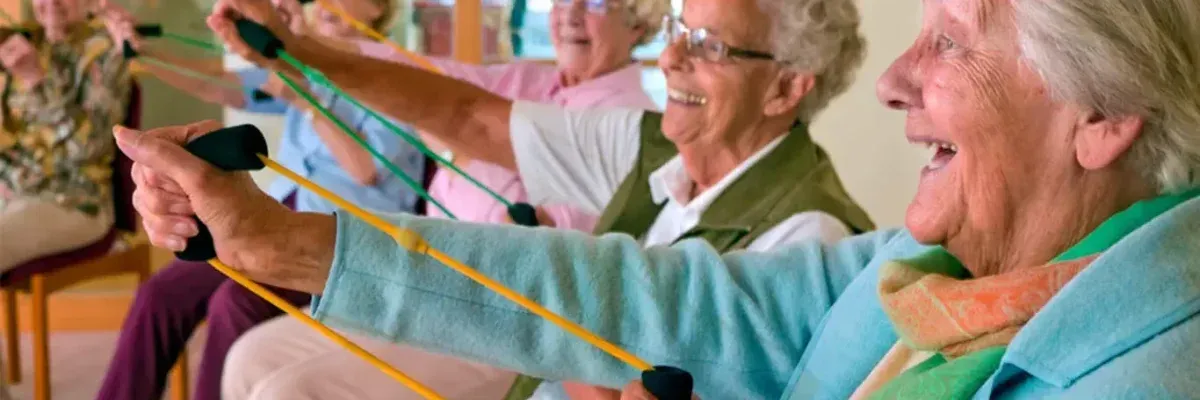
Safeguarding Seniors: Innovative Infection Prevention Strategies in Aged Care Facilities
Introduction to Infection Risks in Aged Care Facilities
In the heart of Australia’s healthcare sector, aged care facilities represent a critical environment where the health and wellbeing of our seniors are paramount. However, these facilities also pose unique challenges in infection control, making the implementation of effective infection prevention strategies crucial. In Australia, where the aged population is on the rise, the stakes are higher than ever to ensure a safe and healthy living space for our elders.
The susceptibility of older individuals to infections, coupled with the communal nature of aged care facilities, amplifies the risk of healthcare-associated infections (HAIs). It’s not just about managing the infections, but also about safeguarding the dignity and quality of life for our seniors. The recent global health events have further highlighted the importance of robust infection control measures, turning the spotlight on the need for innovative solutions in this sector.
This article delves into the world of infection prevention in aged care facilities, exploring a blend of emerging technologies, best practices, and essential policy frameworks. We aim to provide a comprehensive guide that reflects the latest advancements and regulatory landscapes, tailored to meet the unique needs of Australian aged care settings. By embracing these innovative strategies, we can ensure a safer, healthier future for our aging population.
Emerging Technologies in Infection Control
The landscape of healthcare infection prevention in Australian aged care facilities is rapidly evolving, thanks in large part to technological advancements. These innovations are not just enhancing the efficacy of infection control measures but are also streamlining the processes, making them more adaptable and less intrusive for residents.
1. Smart Monitoring Systems: In the fight against infections, knowledge is power. Smart monitoring systems, equipped with sensors and AI algorithms, are being deployed to track hygiene practices, monitor air quality, and even predict potential outbreak hotspots within facilities. This real-time data allows for prompt and targeted responses, significantly reducing the risk of widespread infection.
2. UV-C Disinfection Robotics: Once a concept of science fiction, UV-C disinfection robots are now a reality in some Australian aged care homes. These robots use ultraviolet light to effectively kill bacteria, viruses, and other harmful microorganisms. Because they can operate autonomously, these robots can disinfect large areas without human intervention, ensuring thorough sanitation while minimising staff exposure to pathogens.
3. Antimicrobial Surfaces: The development of antimicrobial coatings and surfaces has been a game-changer. By integrating materials that actively inhibit the growth of bacteria and viruses, these surfaces reduce the risk of surface-transmitted infections. From door handles to bed rails, incorporating these materials into high-touch areas can significantly bolster infection control efforts.
4. Telehealth Services: While not a direct infection control technology, telehealth has played a pivotal role in reducing the need for external healthcare visits. By facilitating remote consultations, aged care residents can receive medical attention without the risk of exposure to external pathogens. This approach has been particularly beneficial during periods of heightened infection risk, like the flu season or pandemic outbreaks.
5. Wearable Health Devices: Wearable technology is providing real-time health monitoring for aged care residents. These devices can track vital signs, detect falls, and even alert staff to changes in a resident’s health status that might indicate an infection. Early detection is crucial for effective infection management, and these devices provide a vital line of defense.
Incorporating these technologies into aged care facilities represents a significant step forward in protecting Australia’s elderly population. As we continue to embrace and integrate these innovations, the future of infection prevention in aged care looks both promising and secure.

Best Practices in Hygiene and Sanitation
In Australian aged care facilities, maintaining high standards of hygiene and sanitation is critical in preventing the spread of infections. Integrating best practices with innovative solutions from providers like Surface Protection Solutions is key to achieving this goal.
1. Use of Antimicrobial Coatings: Surface Protection Solutions champions the use of water-based antimicrobial coatings in aged care facilities. These coatings, containing quaternary ammonium microbe silicone compounds, create an invisible layer of ‘nano-spikes’ that penetrate and destroy the cell membranes of microbes. They offer extended protection on various surfaces, including doorknobs, handrails, and medical equipment, ensuring a safer environment for both residents and caregivers.
2. Routine and Thorough Cleaning Regimens: Regular cleaning schedules are essential. However, it’s not just the frequency that counts, but also the thoroughness and the methods used. Surface Protection Solutions recommends a reduction in facility cleaning by up to 30% when using their hydrophobic, antimicrobial spray, which effectively kills harmful bacteria and pathogens, including COVID-19.
3. Minimising Chemical Usage: The emphasis is on reducing harsh chemicals in cleaning processes. The products offered by Surface Protection Solutions are non-toxic and eco-friendly, providing immediate elimination of bacteria, viruses, and pathogens without compromising the health of elderly residents or the environment.
4. Regular Surface Testing and Monitoring: Continuous monitoring of surface cleanliness and microbial presence is vital. Regular testing helps in assessing the effectiveness of cleaning protocols and the longevity of antimicrobial coatings.
5. Staff Training and Resident Education: Ensuring that all staff members are trained in hygiene protocols is imperative. Additionally, educating residents on personal hygiene practices contributes significantly to overall infection control.
By implementing these best practices, aged care facilities in Australia can significantly enhance their infection control measures, creating a safer and more hygienic environment for their residents.
Training and Education for Staff and Residents
Effective training and education programmes are essential components in the fight against infections in aged care facilities. In Australia, where the aged care sector is rapidly evolving, these programmes play a pivotal role in ensuring both staff and residents are well-equipped to maintain high standards of infection control.
1. Comprehensive Staff Training: Regular training sessions for staff should include updates on the latest infection control techniques, proper use of personal protective equipment, and efficient use of cleaning and disinfection products. This training ensures that all staff members are consistently following the best practices in infection prevention.
2. Resident Education: Equally important is educating the residents about personal hygiene practices. Simple measures like frequent hand washing, proper cough etiquette, and the importance of reporting symptoms early can significantly reduce the spread of infections.
3. Utilising Technology for Training: Leveraging technology, such as online training modules and virtual reality simulations, can enhance the learning experience for staff. These tools provide interactive and engaging ways to understand and apply infection control practices effectively.
4. Collaboration with Healthcare Experts: Collaborating with healthcare experts and infection control specialists for training sessions ensures that the staff receive accurate and up-to-date information. These experts can provide insights into new challenges and solutions in infection prevention.
5. Continuous Evaluation and Feedback: Establishing a system for continuous evaluation and feedback of training programmes helps in identifying areas for improvement and ensuring that the training remains relevant and effective.
Through these focused training and education efforts, aged care facilities in Australia can maintain a high level of vigilance and preparedness against infections, ensuring the safety and wellbeing of their residents.
The Role of Policy and Regulation in Infection Prevention
In the realm of aged care in Australia, the intersection of policy, regulation, and practical infection control measures is crucial for ensuring the highest standards of resident safety. Surface Protection Solutions, with its innovative approaches, aligns closely with these regulatory frameworks, offering solutions that not only meet but often exceed the required standards.
1. Compliance with National Standards: Australian aged care facilities are governed by strict national standards that mandate specific infection control practices. Products and services from Surface Protection Solutions are designed to comply with these standards, providing facilities with reliable infection prevention solutions.
2. Embracing Innovative Solutions within Regulatory Frameworks: The adoption of water-based antimicrobial coatings, as offered by Surface Protection Solutions, is an example of how facilities can incorporate cutting-edge technology within the existing regulatory framework. These solutions offer long-term protection against a wide range of pathogens, aligning with regulatory requirements for environmental hygiene.
3. Regular Audits and Assessments: Regular audits and assessments by regulatory bodies ensure that aged care facilities adhere to the necessary infection control protocols. Surface Protection Solutions aids in these processes by offering products that can be easily integrated into existing cleaning and maintenance routines, simplifying compliance.
4. Policy-Driven Staff Training and Protocols: Staff training and adherence to infection control protocols are often driven by policy guidelines. Incorporating training modules and best practices recommended by Surface Protection Solutions ensures that staff are well-versed in the latest and most effective infection control measures.
5. Continuous Adaptation to Changing Regulations: As regulations evolve to meet new challenges in infection control, aged care facilities must adapt swiftly. Surface Protection Solutions provides agile and adaptable solutions that can be tailored to meet changing regulatory demands, ensuring ongoing compliance and protection for residents.
By aligning with policy and regulation, and utilising innovative solutions like those from Surface Protection Solutions, aged care facilities in Australia can effectively safeguard their residents from infection risks, demonstrating a commitment to the highest standards of care and safety.
Conclusion
In conclusion, the effective management of infection risks in aged care facilities is a multifaceted challenge that requires a combination of innovative technology, best practices in hygiene and sanitation, comprehensive training, and adherence to policy and regulation. The integration of advanced solutions from providers like Surface Protection Solutions plays a pivotal role in enhancing these efforts. Their cutting-edge antimicrobial coatings and eco-friendly cleaning approaches set a new standard in infection control, ensuring the safety and wellbeing of residents in Australian aged care facilities.
As we look towards the future, it’s clear that the continued evolution of infection prevention strategies will remain central to providing the highest quality of care. By embracing these innovative solutions and maintaining a rigorous approach to training and compliance with regulatory standards, aged care facilities in Australia can ensure a safer, healthier environment for our valued seniors. Let’s commit to protecting our elderly population with the utmost diligence and care, leveraging the power of technology and best practices to create a nurturing and secure setting for them to thrive.
Delivering Tailored Solutions to Meet All Your Requirements
We’re excited to share more about how our innovative surface protection solutions can benefit you and your organisation. Please fill out this form with your details, and let us know any specific areas you’re interested in. Our team is dedicated to providing personalised information and will get back to you promptly with tailored insights and answers to your queries. Let’s start a conversation about bringing our superior surface protection to your space!
Get in Touch with Us
We’re excited to share more about how our innovative surface protection solutions can benefit you and your organisation. Please fill out this form with your details, and let us know any specific areas you’re interested in. Our team is dedicated to providing personalised information and will get back to you promptly with tailored insights and answers to your queries. Let’s start a conversation about bringing our superior surface protection to your space!
Sunshine Coast, Queensland
Monday - Friday, 8:00 am - 5:00 pm
Please Let Us Know Your Request
*Please select your appropriate requests
Industries
Follow Us
Surface Protection Solutions implement a sustainable surface protection program that reduces costs, increases customer satisfaction and promotes consumer confidence.
Surface Protection Solutions
© Copyright 2024 | All rights reserved.



